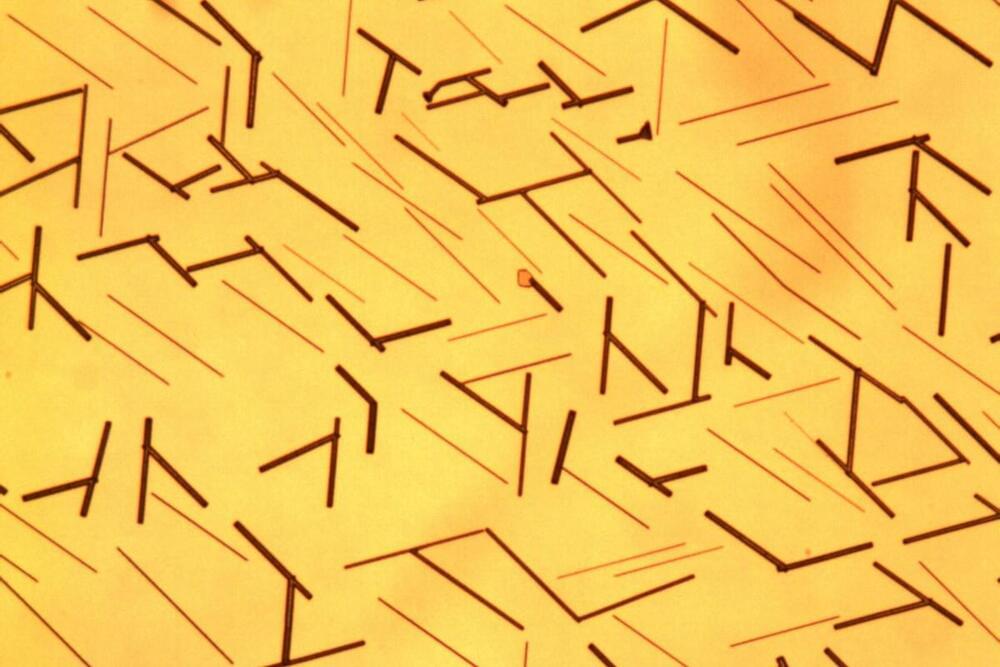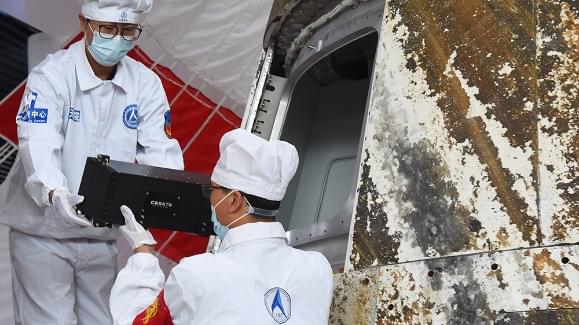Solar cell manufacturing just became easier, more efficient, and less costly. A team of researchers at DOE’s Lawrence Berkeley National Laboratory (Berkeley Lab), in collaboration with UC Berkeley, has discovered a unique material that can be used as a simpler approach to solar cell manufacturing, the team reported.
This material is a crystalline solar material with a built-in electric field — also known as “ferroelectricity” — that was reported earlier this year in the journal Science Advances.
Light microscopy image of nanowires, 100 to 1,000 nanometers in diameter, grown from cesium germanium tribromide (CGB) on a mica substrate. The CGB nanowires are samples of a new lead-free halide perovskite solar material that is also ferroelectric. (Credit: Peidong Yang and Ye Zhang/Berkeley Lab)
Solar panels, also known as photovoltaics, rely on semiconductor devices, or solar cells, to convert energy from the sun into electricity.









